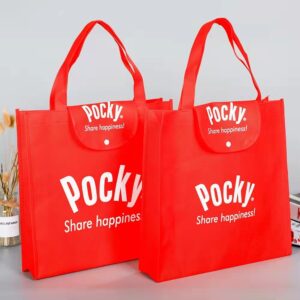How are the non woven bag generated in non woven production?
On January 12, 2024 by Javier James With 0 Comments
- Blogging
The production of nonwoven bags involves several steps within the broader nonwoven fabric manufacturing process. Nonwoven bags are typically made from nonwoven fabric, which is a flat, flexible material composed of fibers or filaments that are bonded together mechanically, thermally, or chemically.
Here is an overview of how nonwoven bags are generated in the nonwoven production process:
- Material Selection:
- The first step is the selection of raw materials. Nonwoven bags can be made from various types of fibers, including polypropylene, polyester, or a combination of fibers. The choice of material depends on the desired properties of the final bag, such as strength, durability, and appearance.
- Web Formation:
- The selected fibers are processed to create a nonwoven web. This can be done using various methods, including:
- Spunbonding: Extruding continuous filaments onto a conveyor to form a web.
- Meltblowing: Extruding molten polymer through fine nozzles to create microfibers that are then cooled and collected on a conveyor.
- Needle Punching: Entangling fibers using barbed needles to create a fabric.
- Spunlaid: Spinning and laying down continuous filaments onto a conveyor.
- The selected fibers are processed to create a nonwoven web. This can be done using various methods, including:
- Bonding:
- The nonwoven web undergoes a bonding process to secure the fibers together. Bonding can be achieved through:
- Thermal Bonding: Using heat to melt and bond the fibers together.
- Chemical Bonding: Applying adhesives to bond the fibers.
- Mechanical Bonding: Entangling the fibers using needles or other mechanical means.
- The nonwoven web undergoes a bonding process to secure the fibers together. Bonding can be achieved through:
- Calendering and Finishing:
- The nonwoven fabric may go through calendering, a process involving the use of heated rollers, to improve surface properties and uniformity. Additional finishing processes, such as printing, dyeing, or coating, may be applied at this stage to enhance the appearance and functionality of the fabric.
- Cutting and Shaping:
- The finished nonwoven fabric is then cut into the desired shape and size for the nonwoven bags. This can be done using cutting machines or dies that create the bag pattern.
- Bag Formation:
- The cut pieces of nonwoven fabric are folded and stitched to form the shape of the bag. The stitching process may involve sewing or ultrasonic welding, depending on the material and production requirements.
- Handle Attachment:
- Handles are attached to the nonwoven bags. Handles can be made from the same nonwoven material or from alternative materials like nylon or polyester. non woven bag They are typically attached securely to the bag to ensure proper weight-bearing capacity.
- Printing (Optional):
- If desired, nonwoven bags may undergo a printing process to add branding, logos, or decorative elements. Printing can be done using various techniques such as screen printing or flexography.
- Quality Control:
- Throughout the production process, quality control measures are implemented to ensure that the nonwoven bags meet specified standards. This may include checking for uniformity, strength, and the absence of defects.
- Packaging:
- The finished nonwoven bags are packaged and prepared for distribution. Packaging methods may vary based on the size and quantity of the bags.
It’s important to note that the specific processes and machinery used in nonwoven bag production can vary depending on the manufacturer and the type of nonwoven fabric used. The versatility of nonwoven production allows for customization to meet different bag specifications and requirements.

Comments are Disabled